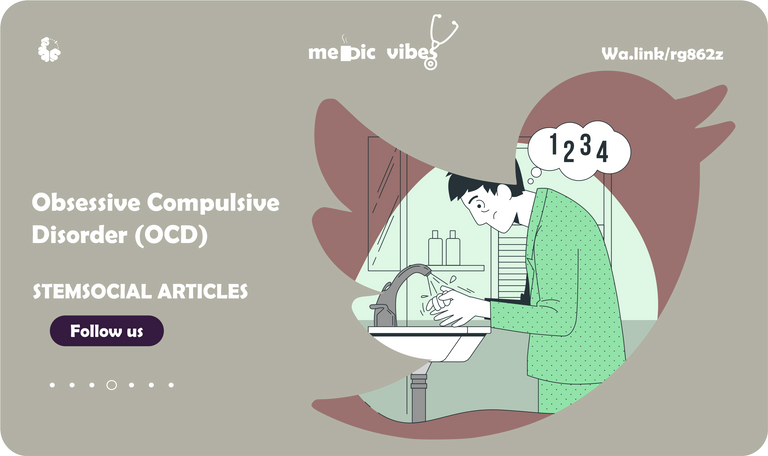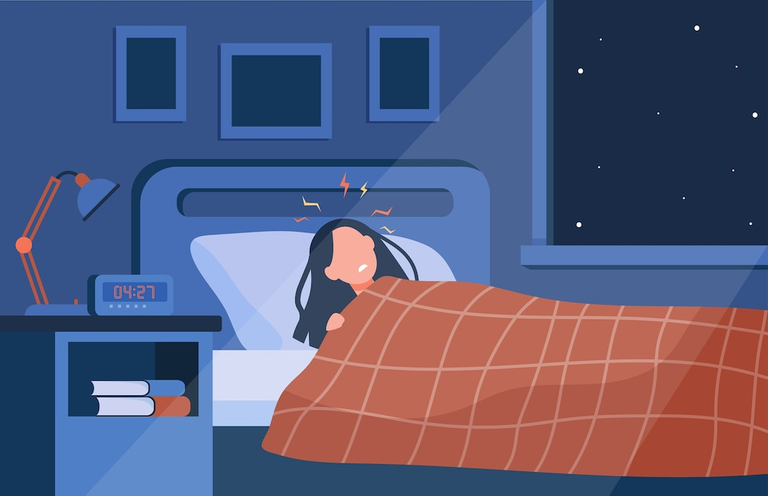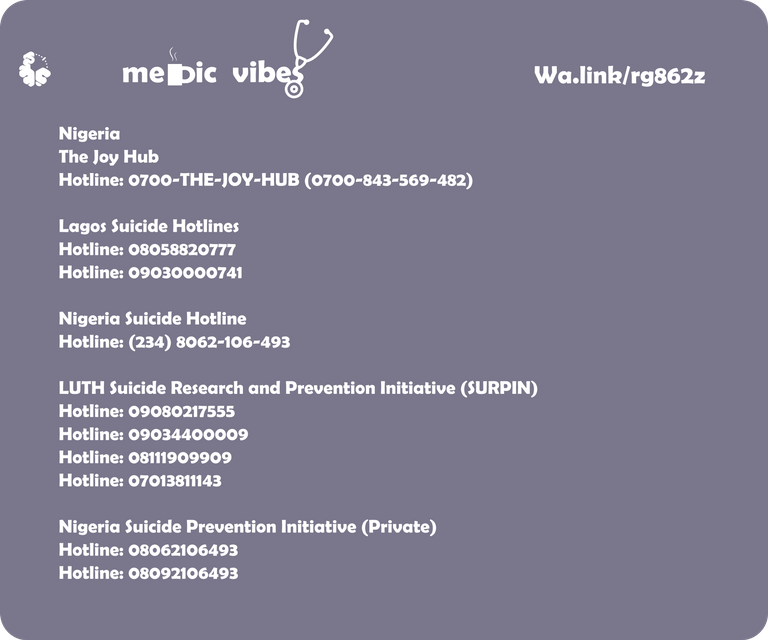
Inkscape.org
Depression vector created by pch.vector - www.freepik.com and Inkscape.org
In the last post, we discussed the clinical features of OCD and we ended it with tips on how to treat the condition

Inkscape.org
Depression vector created by pch.vector - www.freepik.com and Inkscape.org
This is a topic we have covered before when talking about flashbacks. But I really want to discuss every bit of it so we can learn together the causes of the complication and the prevention of this condition.
Anxiety disorder increases levels of anxiety and worry. Women and younger individuals are more likely to experience anxiety than the general population.
This is the Medic Vibes blog, where we share information regarding mental health-related topics. I'm pleased you're here and I hope you're having a good day. The host of the blog, @ebingo, is a physician and an illustrator. We have not yet migrated to our main blog because we currently have only one writer and one illustrator on staff. Currently, we maintain a blog for the STEMsocial community. Last month we discussed depression, and this month we will focus on anxiety. According to a Nigerian study, we began last month, anxiety was prevalent in a youth camp at a rate of 50%. Following the study, we began analyzing tweets, just as we did a month ago.
In an examination of a study, we found that fifty per cent of campers at a youth camp in Northwestern Nigeria exhibited anxiety symptoms and that over three per cent of the global population also suffers from anxiety. Anxiety affects approximately 1% of the Nigerian population.
Everyone has experienced heart palpitations before important exams, presentations, or performances at some point in their lives. However, what if I told you that some individuals experience this feeling daily? Those affected by social anxiety disorder are concerned with what others will think of them. They may interact frequently with one of these individuals, such as their supervisor or a coworker. Individuals will therefore employ avoidance strategies. In one of our previous blog posts, we discussed the manifestations of social anxiety during phone calls.
In anxious individuals, physical, psychological, and reactive symptoms are all present.
Physical symptoms include chest pain, stomach pain, weakness, rapid respiration, and a rapid heartbeat. Frequently, these are caused by the sympathetic discharge of the autonomic nervous system.
Nightmares, flashbacks, and insomnia are psychological manifestations of anxiety.
Avoidance is one of the reactive signs and symptoms of social anxiety disorder and post-traumatic stress disorder. This applies to both individuals and locations.
According to the Diagnostic and Statistical Manual of Mental Disorders, the causes of anxiety vary from person to person and last longer than six months. Keeping it under control can be difficult. Frequently, anxious children experience persistent pain, exhaustion, agitation, and sleep disturbances.
Risk Factors
A combination of genetics and the environment play a minor role in determining who can develop anxiety disorders.
An individual's risk for anxiety is increased by shyness, avoidance of social situations, and avoidance of specific locations.
Childhood exposure to traumatic or extremely stressful events increases the likelihood of developing anxiety.
An additional risk factor is having relatives with anxiety disorders.
Several medical conditions, including thyroid problems and heart conditions such as arrhythmias, increase the risk of developing anxiety disorders.
In general, women experience anxiety more frequently than men. Others believe higher testosterone levels may have a calming effect. Some individuals believe that women are less likely than men to seek therapy for anxiety.
Because depression and anxiety are related and because depression increases a person's risk of suicide, it is crucial to be on the lookout for any changes as soon as they appear.
Post Traumatic Stress Disorder

Post Traumatic Stress Disorder is an anxiety disorder brought about by having horrific things being done to you or witnessing them. Those who suffer from this condition usually suffer from flashbacks and nightmares which are classified as psychological symptoms above.
The issue is that, after these events, people in general have problems coping with the experience. With good self help person can become better but if symptoms are progressively worsened for months and years and these symptoms come in the way of day-to-day activities, then it likely that the person has PTSD.
The symptoms are classified into those related to memories, avoidance, mood, reaction and intensity. To read more about these symptoms check out our old post here.
If after a month the symptoms keep getting worse, you should seek professional help. It is important to stress this because suicide those with anxiety are at risk of depression and suicide mostly those with PTSD.
If you need to know where to get help, call these numbers.
Check your country's suicide hotlines here.
Causes of this condition: no one is sure of the exact cause, but has been associated with stressful life events, having family members with anxiety and depression, Certain temperaments and hormonal regulation.
Similarly the risk of having this condition is associated with dealing with a long period of trauma in adult life and childhood, jobs that increase the chances of trauma, and other forms of anxiety or depression. Alcohol addiction or drug use, poof family support and having relatives with anxiety and depression.
The events that can lead to this condition are being involved in fights, physical or mental abuse, sexual violence and physical assault, threats from a person with a weapon and accidents.(((((
Besides suicidal thoughts and ideations, PTSD can grow to become different forms of depression, other forms of anxiety, encourage alcohol addiction and drug use and eating disorders.
Tips
The signs and symptoms of PTSD are very common in people who have gone through the type of truama described above, But not everyone will develop this condition. It is important to note when symotms start and monitor the duration to see if it is up to a month. Early treatment could halt the worsening of symptoms and prevent complications.
Hive Stories
Read more about PTSD here on Hive from @galenkp here. In this post, you'll find a story about a fight against a strangling situation and acts of kindness that reach deep into the heart.
Questions
- What did you learn about PTSD?
- What did you learn about anxiety?
- What is the relationship between them?
Conclusion
PTSD is a crippling condition. Even though it requires a month for a diagnosis, its symptoms can affect the best of us in similar situations.
I hope that you learned a lot from this post.
To book me for illustration gigs click Here

